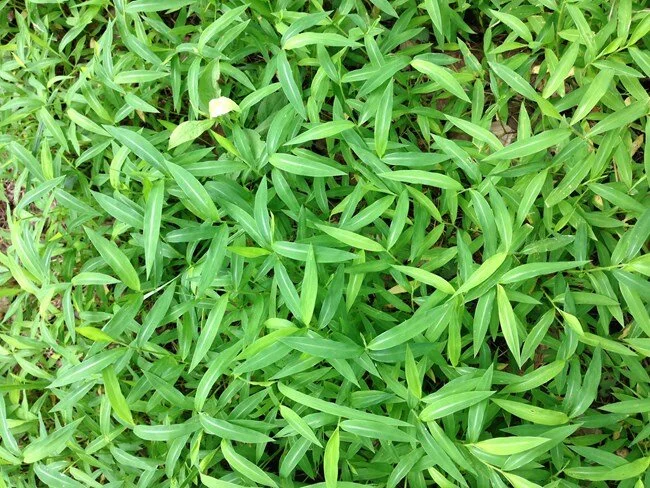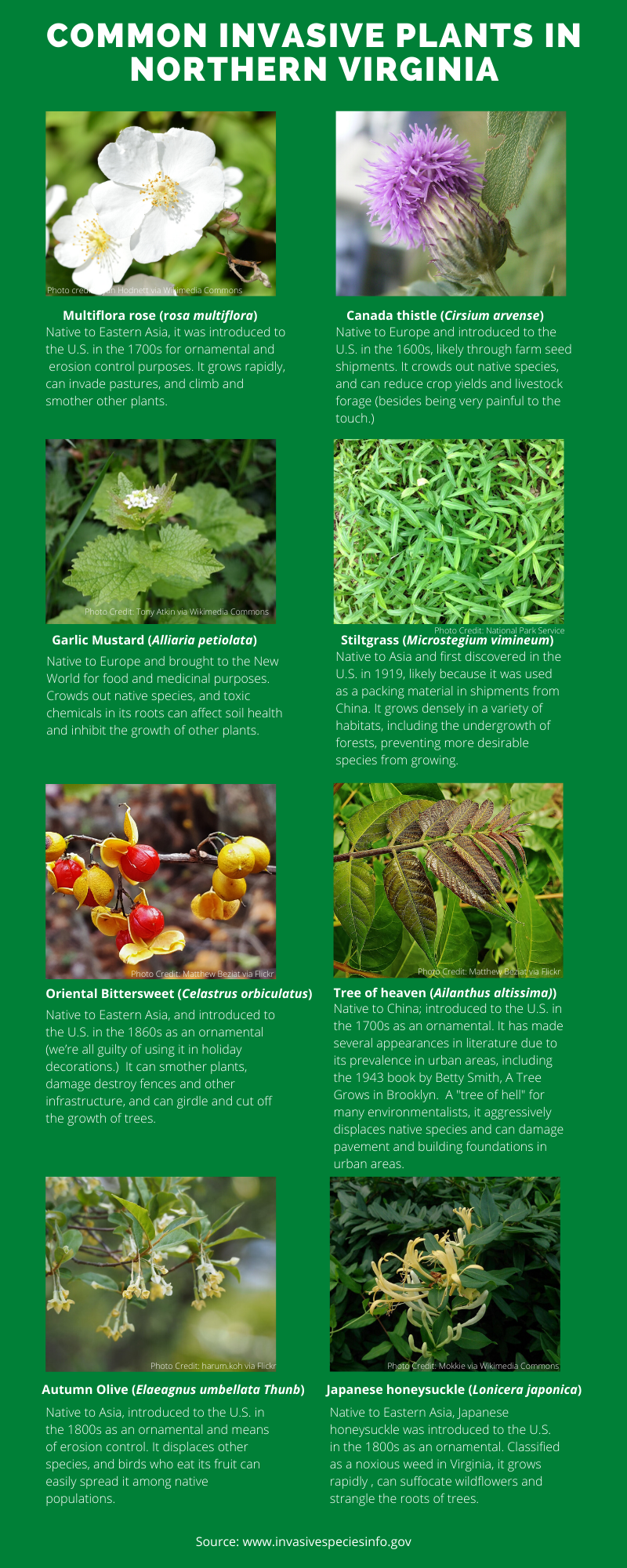Invasive Plant Species Awareness
OSGF
We’ve all seen them in the news: seemingly indestructible kudzu vines swarming over trees, guardrails and buildings, giant hogweed causing horrifying burns on unsuspecting children and landscapers.
In a globalized era where the movement of species is inevitable, dealing with invasive plants can feel like an exhausting and ongoing battle. Not only are such plants an eye-sore and a major pain in the neck for anyone tasked with getting rid of them, but they can wreak havoc on delicate local ecosystems by out-competing native species for space and nutrients.
Oriental bittersweet. Photo credit: Richard Rowley via Wikimedia Commons.
In honor of National Invasive Species Awareness Week - a national observance established ten years ago to raise funds and awareness to invasive species issues - we’re answering some common questions about invasive plants, as well as highlighting several particularly trouble-making species at the Oak Spring Garden Foundation. Read on to learn more.
Are all non-native species bad?
How to approach and define non-native species is a complex and ongoing issue for ecologists, horticulturists, and many others who work with plants. The line between what is native or invasive, harmless or threatening, can be a blurry one. Especially as the climate changes and many species begin to redistribute themselves, scientists continue to debate on how to classify native, non-native, and invasive plant species. Many exotic species can exist among native ones without out-competing them for resources, and some can even be beneficial to their plant communities- which is why it’s so important to be able to identify the species we are certain do more harm than good in our environment.
Why are invasive species such a problem?
At the most basic level, invasive species are problematic because they push native plants out of the picture by out-competing them for space and nutrients. Often resistant to plant-eating wildlife and able to thrive in a variety of environments and climates, some invasives pose a greater risk to native species than others. The factors that inform how dangerous an invasive plant is include how quickly and abundantly it is able to spread, how difficult it is to manage and control, and the degree to which it can alter natural processes, such as water flow or soil chemistry. As if that wasn’t enough to worry about, invasive species can also spread blights, pose fire risks, harm native wildlife, and devastate agricultural businesses.
Some invasive plants have been ingrained in our culture and environments for so long, it is difficult to see them as a threat - making them all the more dangerous to our ecosystems. For example, while many people associate the sweet taste and scent of Japanese Honeysuckle with lazy summers, the pretty plant is one of the most pervasive and widespread invasive species in the U.S., taking over old-growth forests and suppressing the germination of native species’ seeds.
What can I do about invasive species?
Educating yourself is the first step towards protecting your property or yard from harmful invasive species: learn how to identify them, the size of the threat they pose to local ecology, and whether you need to report them to the proper authorities or can receive assistant with eradication.
For Virginians, a good place to start is with The Virginia Department of Conservation and Recreation’s handy printable list of the state’s invasive plant species. It includes information on the plant’s invasiveness rank, as well as some early-detection invasive species to be on the lookout for.
The ACL team implemented a small controlled burn to clear weeds from Oak Spring’s ponds yesterday - one of the many methods they use to keep invasive species at bay and encourage the growth of natives. Photo by TJ Sherman.
Combatting unwanted invasives can be an ongoing and frustrating task, requiring quite a bit of effort and experimentation. At OSGF, our Arboriculture, Conservation, and Landscapes (ACL) team takes a variety of approaches in their quest to make the land welcoming for native trees and wildflowers, including spot-spraying invasive species, cutting them down and painting their stumps with herbicides, and total removal. The team is in frequent consultation with other environmental organizations, including the Blandy Experimental Farm at the Virginia State Arboretum and Virginia Working Landscapes, to ensure that they are using the safest and most effective practices for tackling invasive species.
Where can I find more information?
If you live in Northern Virginia or nearby, you may want to check out this upcoming workshop presented by Blandy Experimental Farm and the Blue Ridge Partnership for Invasive Species Management on identifying and tackling nonnative invasive plants in this area.
OSGF, in partnership with Virginia Working Landscape, is also presenting a free talk from author and biologist Doug Tallamy on March 29th at the Hill School in Middleburg, which will address backyard biodiversity and non-native plants.
Other helpful websites to check out include our friends at The Clifton Institute in Warrenton, VA, the Virginia Cooperative Extension, the U.S. Department of Agriculture, and the Virginia Invasive Species Working Group . Remember, we can all play a part in protecting our native landscapes!
Special thanks to Clif Brown, OSGF Head of Arboriculture, Conservation, and Landscapes, for his help on this blogpost!



